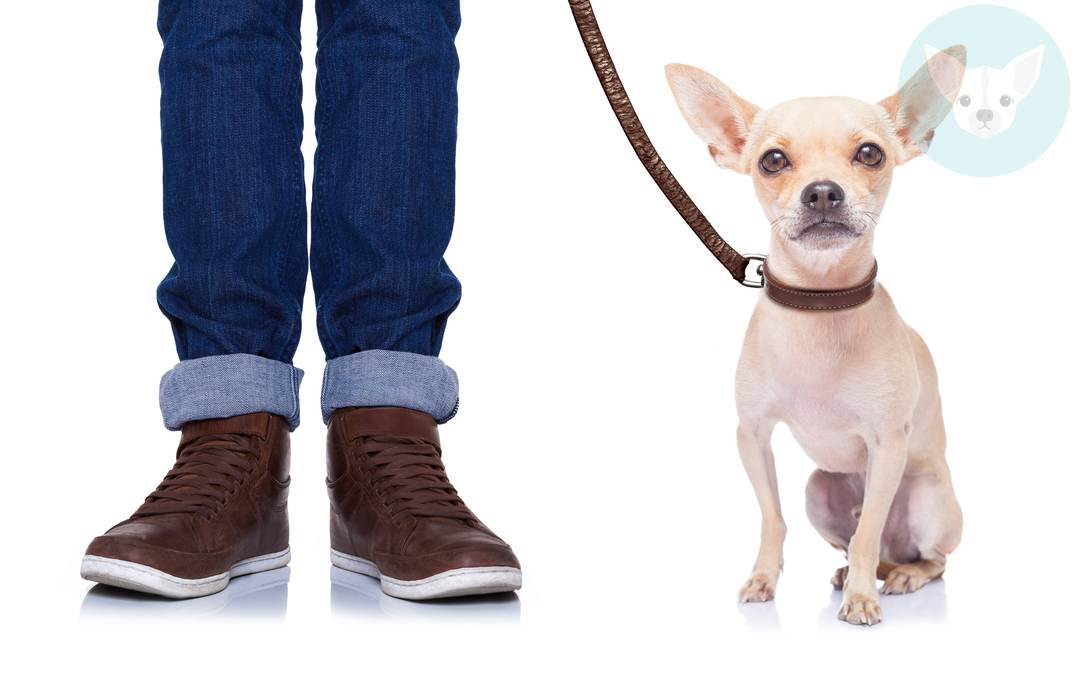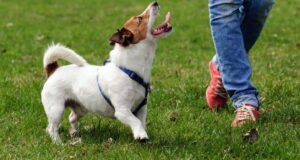From the tiniest Chihuahua to the biggest Great Dane, every dog needs exercise, which means that multiple times a day, it’s time to take them on a walk. But there’s a difference between a Chihuahua on a leash and a Chihuahua that is leash-trained. A well-trained Chihuahua will walk with a little bend in the leash at all times. They don’t bark or lunge at strange sights, humans, or other dogs. And they keep a good pace, not stopping to sniff at every little thing.
Most Chihuahuas don’t start out this well-trained, and each Chihuahua needs a little work to make them a good walker. Here are some simple steps that you can use as you start out leash training your pup into the perfect canine citizen.
Choose your equipment carefully.
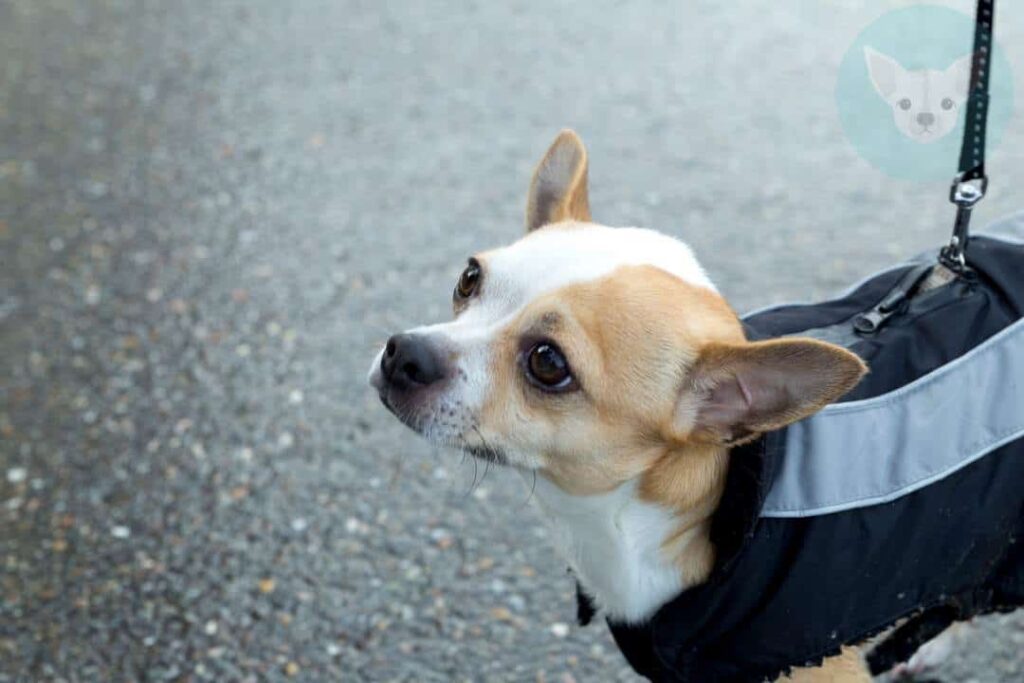
One of the keys to starting your leash training out on the right paw is selecting the best equipment for your Chihuahua. The two things you need to walk your Chihuahua are a leash and a collar or harness.
Leashes – most experts agree that when you’re starting out with Chihuahua training, it’s important to choose a standard leash, about 6 feet long. Retractable leashes can be very convenient once your Chihuahua is trained, but it’s best to teach good leash behavior on a leash that gives your pup a limited range.
Collars and/or Harnesses – there are a LOT of options when choosing collars and harnesses. Harnesses work well for Chihuahuas that tend to pull on their leash because they cause discomfort for the Chihuahua when they pull, but not injury. Some collars are also specially designed for certain types of Chihuahuas and behaviors. For starting out, a good harness will get you a long way, but if you need a little more customized solution, talk to your vet or a local Chihuahua trainer for options that best fit your pup.
Make a leash time the most fun time.
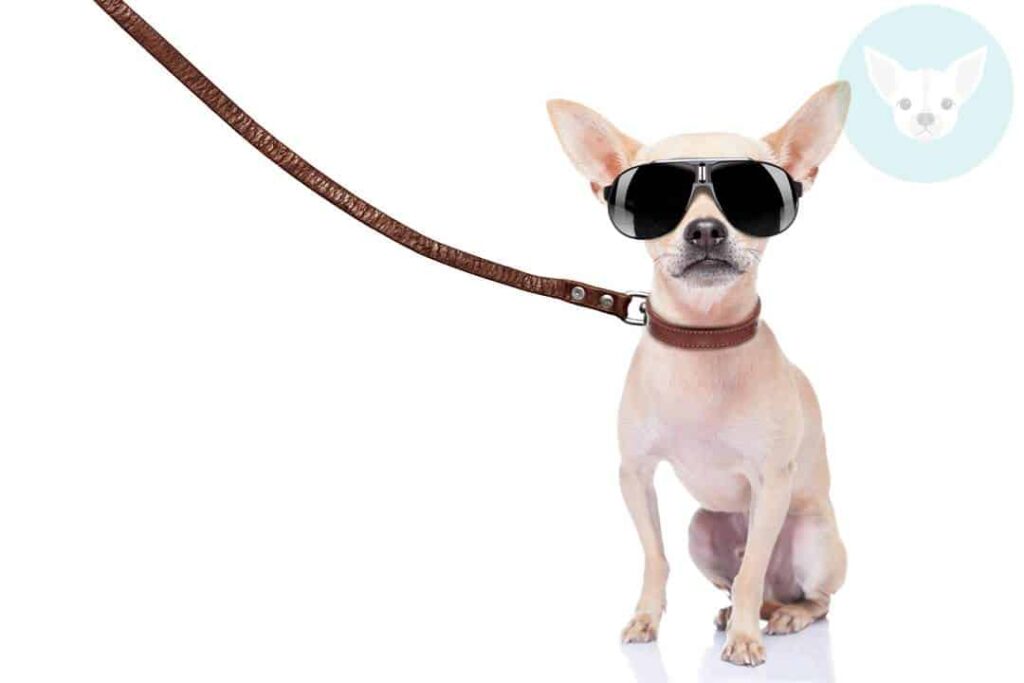
Being strapped into a leash and collar for the first time can be a little bit stressful for your pup, so you want to make this process as pleasant and happy as possible. If you don’t, you might end up with a pup that resists putting on a leash or a harness. Our Chihuahua developed a love of playing a game with her harness. She knew that grabbing the harness meant we wanted her to do something, so she would run away, hide, and try to “play” to make the attention last as long as possible. We had to use a lot of treats and training time to change that reaction to make her easier to take on walks.
So that your Chihuahua doesn’t develop an odd association with or fear of their leash and harness, start your leash and harness time inside. Keeping unnecessary outside distractions at first helps to focus your pup. Reward your Chihuahua with lots of treats and praise as you put on their leash and harness and walk around the house. This will teach them that leash and harness time equals treats and love, which helps establish it as a positive experience. As you progress with your training, make sure not to abandon this entirely. Continue to give praise and the occasional treat when getting your Chihuahua walk-ready, so they keep associating walks with positivity, even when the walks start to become more challenging.
Try to stop pulling as early as possible.
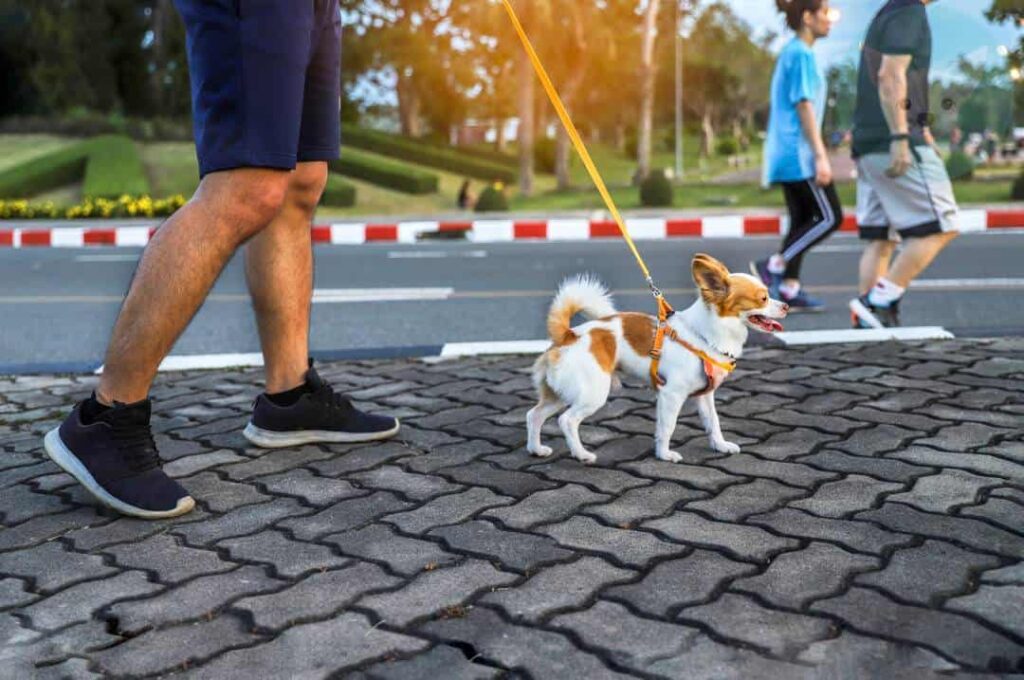
One of the biggest complaints of anyone who’s ever walked a Chihuahua is pulling on the leash. Chihuahuas pull for all kinds of reasons – excitement, fear, curiosity, or because there’s a specific stimulus they want to get at. Pulling is a nuisance for owners of small Chihuahuas and can be a real challenge for anyone trying to control a larger Chihuahua. The best way to limit pulling is to start training your Chihuahua not to pull as early as possible and stay consistent with that training always.
Whenever your pup pulls on their leash, the American Kennel Club suggests that humans “become a tree.” Stand still in your spot until your Chihuahua stops pulling. Holding your ground helps teach your pup that they are not directing you where to go, you are directing them. Obviously, this is more difficult if you have a particularly large Chihuahua, but there are special harnesses created for those Chihuahuas so that they’re more likely to stop themselves when they pull.
If your Chihuahua lunges or barks redirect their attention.
With our small Chihuahua, our biggest struggle is that she likes to lunge and bark at other Chihuahuas on our walks. It can disturb both your walk and your neighbor’s walk with their Chihuahua, so we work hard to try and calm her and limit her barking. The best way to teach your Chihuahua not to bark or lunge is to redirect their attention and then reward them.
First, you want to train yourself not to pull or drag your Chihuahua away when they’re barking or lunging. The increased pressure on them from a pull can reinforce their fear and aggression. Also, that kind of reaction suggests that you are also nervous or worried about their behavior, which again, reinforces it.
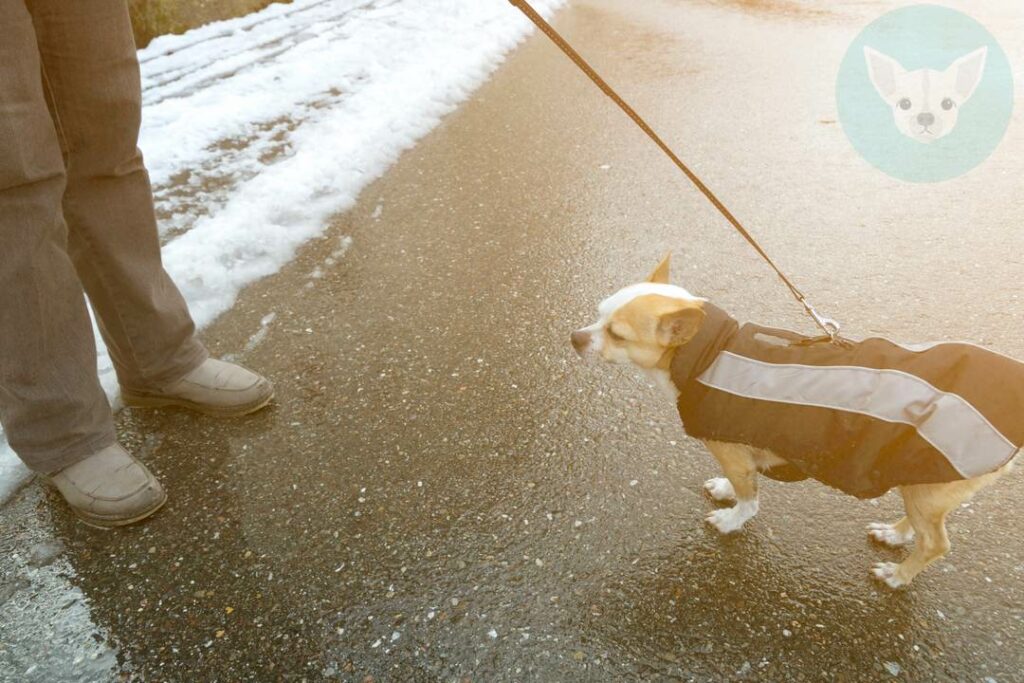
Instead, remain as calm as possible and try to redirect their attention using treats. Try to get your Chihuahua to sit, and if they’ve learned the “watch me” command in training, that’s a great way to turn their attention as well. The key is to redirect and then reward because you don’t want to appear to be rewarding them for barking and lunging.
Also, you’ll want to do your best to maintain distance between your pup and things that make them react. Don’t pass too close or let your pup “greet” other Chihuahuas until they can remain calm as they approach them. Keeping a bit of distance can help your Chihuahua slowly learn that they don’t need to react or defend you. However, you also don’t need to avoid going on walks or exposing your pup to those things. It’s only by repetition that they’ll learn to chill, so keep taking them out, but try to slowly introduce them to things that seem scary.
Soon, you and your pup will be struttin’ your stuff all through the town! We know you’ll be champs!

